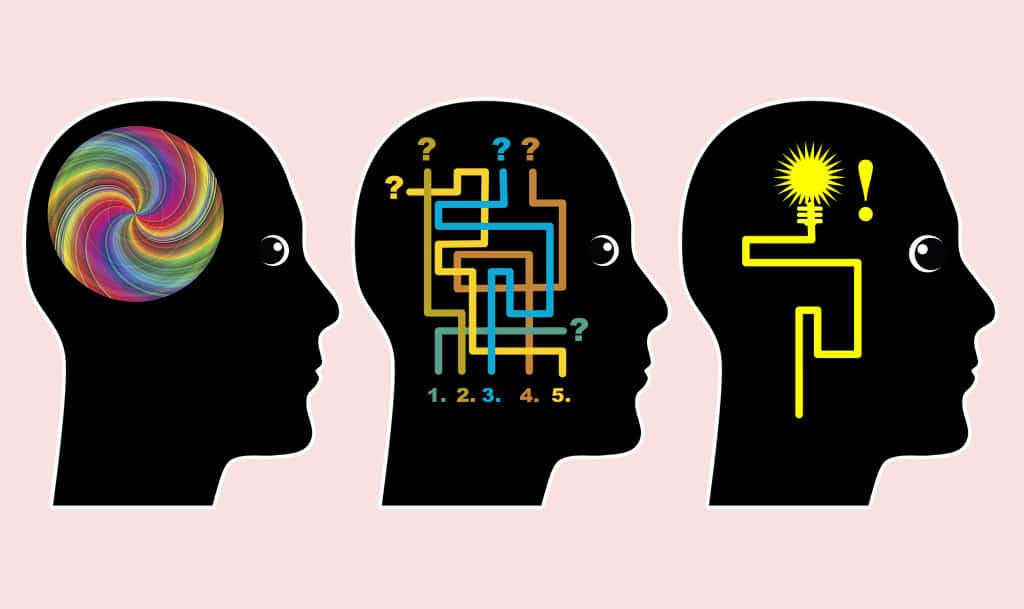
The best way to succeed at learning, understanding, and memorizing is to know your personal learning style. That way, you can cater how you spend time in-class and studying to the methods that work best for you, instead of spending time trying to study in a way that is counter-productive to your learning style.
What's your learning style?
- Take this free 20 question quiz to find out your learning style – your result is broken down into how much of each type you are and then provides information on which type you have the highest score in
Visual Learning (Read & Write Learners)
One of the most common learning styles – which is why most schools cater more to visual learners than any other style.
These learners prefer to see things in front of them rather than just hearing it – for instance, a visual learner would need a map or to see directions laid out instead of just hearing them from someone.
Signs of being a visual learner:
- Like pictures, diagrams, and graphs when being presented with new information
- Good at reading maps and charts
- Tend to create pictures in their minds when reading
- May need extra time to think while processing a speech or lecture without a visual component
- Generally good at interpreting body language
Study tips for visual learners:
- Copy down information/tables/diagrams as much as you can when learning – also create your own charts or sequences to understand how things link together
- Use all books/textbooks available to better understand the information
- Use videos as a learning tool as much as possible
- Use multi-colored highlighters to make notes more visually appealing
- Create flashcards on index cards when trying to memorize information
- When memorizing, replace words/phrases with initials or pictures to help strengthen association to those terms
Auditory Learning (Read & Listening Learners)
These learners don’t need to take notes while learning – just need to actively listen to the instructor. Often the “talkers” in class, so they can appear disruptive or inattentive.
Signs of being an auditory learner:
- Have a great memory for previous conversations (such as jokes) or for music/lyrics
- Enjoy participating in discussions, debates, and casual conversations
- Depending on level of confidence, often prefer to give oral presentations over a written report
- Could read slowly or have trouble interpreting graphs/diagrams
Study tips for auditory learners:
- Try to only use study techniques that involve speaking or hearing information
- Always ask questions to engage more with the material – it also helps with memorizing and understanding concepts
- Record lectures or classes, or take notes and then speak those notes out loud to a tape recorder and listen to them
- Watch videos to learn new information – preferably ones with someone talking or some kind of narration
- Use word associations, like mnemonic devices, and say them out loud, along with the full meaning, to memorize
- Repeat information out loud to yourself in your own words
- Always get involved in discussions – whether during class when there’s the opportunity, or after class when you can talk to other students about what you’ve just learned, or tell someone at home about it
Kinesthetic Learning (Learning by Doing)
Learn best when doing new things while they learn about them (i.e. doing the skills in class). Not suited to the usual classroom setting – they learn best while being active, which is why in the classroom they come across as disruptive/uninterested since they can’t sit still for too long.
Signs of being a kinesthetic learner:
- Enjoy using their hands and putting things together (or taking things apart)
- Good at remembering things they have done before (cooking, assembling things, puzzles)
- Most enjoy active learning, such as doing science experiments
- Like being active and doing activities like sports
- Don’t have great penmanship or spelling skills
Study tips for kinesthetic learners:
- Make flashcards on index cards and use them to memorize facts since the act of flipping them over will engage your brain
- Always incorporate break time into study time – at least five minutes every hour, maybe more for some people
- Use examples as much as possible when trying to understand new information – it helps to picture things in your head to make associations with concepts and facts, and it engages you as you learn
- Make a study group and talk about what you’ve learned
- While you’re studying, do something active – tap a pencil, squeeze a small ball, or tap your finger on your leg
- Consider walking on a treadmill or stationary bicycle when studying from notes or reading a textbook to keep yourself active and engaged with the material

